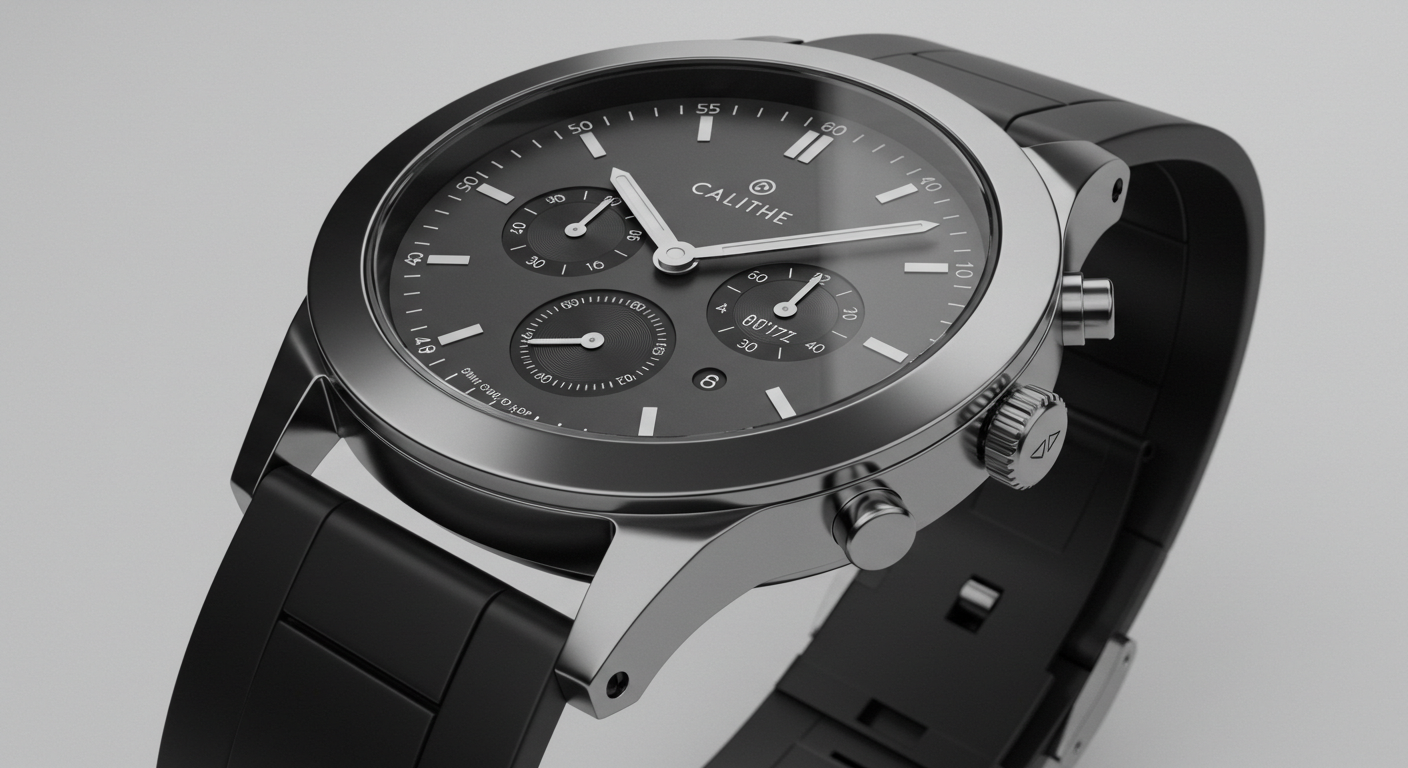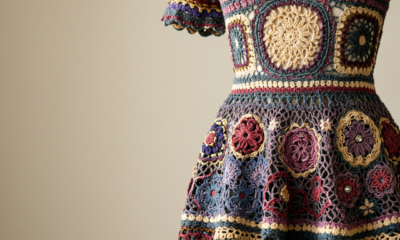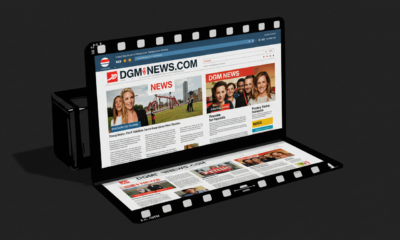LIFESTYLE
Burguiouse: Luxury Meets Sustainable Modern Living

In recent years, the term “burguiouse” has emerged as a buzzword in discussions about lifestyle, architecture, and design. While its exact definition may vary, burguiouse is generally understood to represent a fusion of **bourgeois** values—such as comfort, elegance, and sophistication—with a **green** or sustainable ethos. This concept encapsulates the growing desire among individuals to live luxuriously while minimizing their environmental impact. In this article, we will explore the origins of burguiouse, its implications for modern living, and how it is reshaping industries ranging from real estate to fashion.
The Origins of Burguiouse
The term “burguiouse” is a portmanteau of “bourgeois” and “green,” reflecting the blending of traditional bourgeois ideals with contemporary environmental consciousness. The bourgeois lifestyle, historically associated with the middle and upper classes, emphasizes material comfort, aesthetic refinement, and social status. However, as global awareness of climate change and environmental degradation has grown, there has been a shift toward integrating sustainability into this lifestyle.
Burguiouse represents a response to this shift, offering a vision of luxury that is both aspirational and responsible. It is not merely about owning expensive items or living in opulent spaces; it is about doing so in a way that aligns with ecological principles. This concept has gained traction among millennials and Gen Z, who prioritize sustainability and ethical consumption while still valuing the finer things in life.
The Pillars of Burguiouse Living
At its core, burguiouse living is built on three key pillars: **sustainability**, **luxury**, and **innovation**. These elements work together to create a lifestyle that is both indulgent and environmentally conscious.
-
Sustainability
Sustainability is the foundation of burguiouse living. This pillar emphasizes the use of eco-friendly materials, energy-efficient technologies, and practices that reduce waste and carbon footprints. For example, burguiouse homes often feature solar panels, rainwater harvesting systems, and energy-efficient appliances. Similarly, burguiouse fashion focuses on sustainable fabrics, ethical production methods, and timeless designs that transcend seasonal trends.
-
Luxury
Luxury in the context of burguiouse is not about excess but about quality and intentionality. It involves curating spaces and experiences that are both aesthetically pleasing and functional. Burguiouse interiors, for instance, might include handcrafted furniture made from reclaimed wood, organic cotton linens, and artisanal decor. The emphasis is on creating an environment that feels luxurious without compromising sustainability.
-
Innovation
Innovation is what sets burguiouse apart from traditional notions of luxury and sustainability. It involves leveraging cutting-edge technologies and creative solutions to achieve a harmonious balance between comfort and eco-friendliness. Smart home systems, for example, allow burguiouse homeowners to monitor and optimize their energy usage. Similarly, advancements in sustainable fashion, such as lab-grown leather and biodegradable textiles, are pushing the boundaries of what is possible.
Burguiouse in Architecture and Interior Design
One of the most visible manifestations of burguiouse is in architecture and interior design. Burguiouse homes are characterized by their seamless integration of luxury and sustainability. These spaces often feature open floor plans, large windows to maximize natural light, and the use of natural materials like stone, wood, and bamboo. Additionally, burguiouse design prioritizes energy efficiency, with features such as geothermal heating, green roofs, and passive solar design.
Interior design in burguiouse homes is equally thoughtful. The focus is on creating a serene and inviting atmosphere that reflects the homeowner’s values. This might include minimalist decor, vintage or upcycled furniture, and a neutral color palette inspired by nature. The result is a space that feels both luxurious and grounded, offering a retreat from the chaos of modern life while remaining environmentally responsible.
Burguiouse Fashion: Where Style Meets Sustainability
The fashion industry has embraced a new ethos, with designers and brands increasingly prioritizing sustainability without compromising style. This movement is characterized by high-quality, timeless pieces designed to endure, standing in stark contrast to the fast fashion model, which is notorious for its environmental and social harm.
Many brands adopting this approach use sustainable materials like organic cotton, hemp, and recycled fabrics. They also emphasize ethical production practices, ensuring fair wages and safe working conditions for their employees. Additionally, innovative techniques such as zero-waste pattern cutting and waterless dyeing are often employed to further minimize environmental impact.
This shift reflects a broader change in consumer attitudes. Today’s shoppers are increasingly drawn to brands that align with their values, seeking the ability to look stylish while making responsible choices. This trend highlights a growing desire for fashion that is both aesthetically pleasing and ethically conscious.
The Role of Technology in Burguiouse Living
Technology plays a crucial role in enabling burguiouse living. From smart home systems to sustainable energy solutions, technological advancements are making it easier than ever to live luxuriously while minimizing environmental impact. For example, smart thermostats and lighting systems allow homeowners to optimize their energy usage, reducing both their carbon footprint and their utility bills.
In addition, technology is driving innovation in sustainable materials and production methods. For instance, 3D printing is being used to create furniture and decor from recycled materials, while blockchain technology is being employed to ensure transparency and traceability in supply chains. These advancements are helping to make burguiouse living more accessible and achievable for a wider audience.
Challenges and Criticisms of Burguiouse
While burguiouse represents an admirable vision of sustainable luxury, it is not without its challenges and criticisms. One of the primary concerns is accessibility. The high cost of sustainable materials, energy-efficient technologies, and artisanal products can make burguiouse living prohibitively expensive for many people. This raises questions about whether burguiouse is truly inclusive or if it is limited to a privileged few.
Another criticism is the potential for “greenwashing,” where brands or individuals use the language of sustainability to market products or lifestyles that are not genuinely eco-friendly. This underscores the importance of transparency and accountability in the burguiouse movement. Consumers must be vigilant in researching and supporting brands that are truly committed to sustainability.
The Future of Burguiouse
As the world faces climate change and resource depletion, sustainable living principles grow increasingly vital. This concept provides a roadmap for combining luxury with eco-consciousness, offering a model for individuals, businesses, and policymakers. In the coming years, innovations in sustainable materials and energy-efficient technologies will advance. Consumer demand for eco-friendly products will drive more industries to adopt these practices.
This approach reflects a mindset shift, proving that luxury and sustainability can coexist. By embracing this vision, we build a future that balances indulgence with responsibility. It ensures we meet current needs without compromising future generations.
Conclusion
In conclusion, burguiouse is more than just a trend; it is a reflection of the evolving values and priorities of modern society. By combining the elegance and comfort of bourgeois living with a commitment to sustainability, burguiouse offers a compelling vision for the future. Whether in architecture, fashion, or technology, this concept is reshaping industries and challenging us to rethink what it means to live well.
As we move forward, it is essential to address the challenges and criticisms associated with burguiouse , ensuring that it remains inclusive and authentic. By doing so, we can harness the power of this movement to create a world that is both luxurious and sustainable—a world where we can enjoy the finer things in life while protecting the planet for generations to come. Burguiouse is not just a lifestyle; it is a call to action, urging us to live with intention, purpose, and respect for the environment.
ENTERTAINMENT
The Enchanting World of the Faerie Festival in Neopets: A Celebration of Magic and Merriment

For over two decades, Neopets has captivated millions of players with its vibrant virtual world, filled with whimsical creatures, engaging games, and exciting events. Among its most beloved annual celebrations is the Faerie Festival, a magical event where players can interact with Neopia’s faeries, earn rare rewards, and participate in exclusive activities.
This article explores the history, traditions, and gameplay features of the Faerie Festival, along with tips for making the most of this enchanting event. Whether you’re a seasoned Neopian or a curious newcomer, prepare to dive into the wonder of the Faerie Festival!
What is the Faerie Festival?
The Faerie Festival is a recurring Neopets event that celebrates Neopia’s faeries—mystical beings who bestow blessings, quests, and rare items upon players. During the festival, Faerieland becomes the center of activity, offering:
- Daily Faerie Quests (with a chance for stat boosts or rare items)
- Exclusive Items & Wearables (faerie-themed collectibles)
- Special Events & Games (mini-games, raffles, and storylines)
- Charity Corner (sometimes) – A donation-based rewards system
The festival typically runs for one to two weeks, often in September or October, aligning with the autumnal equinox—a time of magic and transformation in many mythologies.
The History of the Faerie Festival
Origins & Early Celebrations
The Faerie Festival has been a part of Neopets lore since the early 2000s, evolving from simple quest-based events into a full-fledged celebration with unique plots and rewards.
- 2004-2008: Early versions featured basic Faerie Quests with random rewards.
- 2010s: Expanded with Charity Corner, where players donated items for points.
- 2017-2019: Introduced Faerie Quest Event Boosts, increasing the frequency of rare quests.
- 2020-Present: Modern festivals include story-driven plots, avatar rewards, and NC Mall exclusives.
Notable Moments
- The Faerie’s Ruin Plot (2010) – A major storyline where Faerieland crashed into Neopia, reshaping the festival’s lore.
- The Return of the Grey Faerie (2015) – Once a rare encounter, she became a regular quest-giver, offering Fountain Faerie rewards.
- 2023 Revamp – Introduced a new quest system, allowing players to choose their rewards.
Key Features of the Faerie Festival
1. Daily Faerie Quests
Each day, players receive a free Faerie Quest from one of the following faeries:
| Faerie | Reward |
|---|---|
| Light Faerie | Temporary stat boosts |
| Dark Faerie | HP or defense increases |
| Fire Faerie | Strength boosts |
| Water Faerie | Movement or intelligence boosts |
| Air Faerie | Speed boosts |
| Earth Faerie | Defense or endurance boosts |
| Battle Faerie | Multiple stat increases |
| Grey Faerie | Chance for a Fountain Faerie dip (color change!) |
| Fountain Faerie | FREE PAINT BRUSH DIP! (Rare) |
Tips for Quests:
- Use the Shop Wizard (or Super Shop Wizard for premium users) to find quest items quickly.
- Stock up on cheap quest items (like Dung Jelly or Rainbow Dung) beforehand.
- Refresh at the Quest Board if you get a faerie you don’t want.
2. Charity Corner (When Available)
A fan-favorite sub-event where players donate items in exchange for points, redeemable for rare prizes.
- Best Items to Donate:
- R90-99 rarity items (like Codestones, Dubloons, or cheap plushies).
- Use the Jellyneo Item Database to find optimal donations.
3. Exclusive Festival Rewards
- Avatars (e.g., “Faerie Quest” avatar)
- Wearables (faerie wings, dresses, and backgrounds)
- Site Themes (festival-themed layouts)
- NC Mall Items (premium collectibles)
4. Festival Games & Activities
- Faerie Crossword Puzzles (Neopian Times contests)
- Caption Competitions (community engagement)
- Flash Games (RIP) – Previously, games like Faerie Bubbles were featured.
How to Maximize Your Faerie Festival Experience
1. Prepare in Advance
- Stock Up on Quest Items – Keep a stash of common quest request items.
- Save NP – Some quest items can be expensive (e.g., Snow Paint Brushes).
- Check Jellyneo/Neopets Reddit for event leaks and tips.
2. Prioritize the Best Quests
- Grey Faerie & Fountain Faerie are the most valuable (free color changes!).
- Battle Faerie is great for Battledome training.
- Ignore Light Faerie if you want permanent stat boosts.
3. Participate in All Activities
- Don’t skip Charity Corner (if available)—it’s a great way to clear inventory and earn rare stamps or wearables.
- Enter Neopian Times contests for bonus prizes.
4. Trade & Sell Festival Items
- Faerie-themed items inflate in price during the event—sell extras for profit!
- NC Mall items (like Faerie Cookies) are in high demand.
The Cultural Impact of the Faerie Festival
The Faerie Festival isn’t just an in-game event—it’s a beloved tradition that brings the Neopian community together.
- Fan Art & Creativity – Many players create faerie-themed artwork, stories, and Neopets customizations.
- Social Media Buzz – #FaerieFestival trends on Twitter/X, with players sharing their rewards and quests.
- Economic Shifts – The festival affects the Neopian economy, with item prices fluctuating based on quest demands.
Future of the Faerie Festival
With Neopets undergoing revamps (including the transition away from Flash), the Faerie Festival continues to evolve. Possible future additions:
- New Faeries (e.g., a “Cosmic Faerie” for space-themed rewards)
- Mobile-Friendly Quests (as Neopets expands on app platforms)
- More Interactive Plots (continuing the Faerieland storyline)
Conclusion
The Faerie Festival stands as one of Neopets’ most anticipated annual events, captivating players with its unique blend of magic, nostalgia, and rewarding gameplay. Since its inception, this enchanting celebration has evolved significantly, yet it consistently maintains its core charm that keeps the Neopian community coming back year after year.
At its heart, the festival offers players three primary attractions. First and foremost, it provides rare opportunities to interact with Neopia’s beloved faeries, each offering distinct benefits. For instance, the Fountain Faerie grants coveted paint brush dips, while the Battle Faerie delivers powerful stat boosts. Additionally, the event features exclusive items and wearables that can’t be obtained at any other time.
Beyond these immediate rewards, the festival serves several important functions within the Neopets ecosystem. On one hand, it stimulates the game’s economy as players trade festival-exclusive items. On the other hand, it fosters community engagement through shared experiences and collective goals. Moreover, the event often introduces new plot elements that advance Neopia’s overarching narrative.
For newcomers, the festival might seem overwhelming at first. However, with proper preparation, even beginners can maximize their rewards. Specifically, players should stock up on common quest items beforehand and familiarize themselves with each faerie’s potential rewards. Similarly, participating in all festival activities ensures no opportunities are missed.
While the event only lasts a limited time, its impact extends far beyond the festival period. The items obtained often retain significant value, and the stat boosts provide lasting advantages. Furthermore, the memories created and community connections formed during the festival endure throughout the year.
Ultimately, what makes the Faerie Festival truly special is how it encapsulates Neopets’ magical essence. Whether you’re a veteran player or just starting your Neopian journey, this event offers something valuable for everyone. As the festival continues to evolve, one thing remains certain: it will always be a highlight of the Neopets calendar, bringing wonder and excitement to players worldwide.
Mark your calendars for this year’s festival—adventure awaits in Faerieland!
ENTERTAINMENT
Taylor Swift Crochet Dress: A Fashion Icon’s Handmade Style

Taylor Swift has undoubtedly cemented her status as both a musical powerhouse and a fashion icon, with her style choices consistently capturing public attention. Among her most memorable fashion moments, her delicate crochet dress appearances stand out as particularly noteworthy. These outfits have not only sparked admiration from fans but also inspired crochet enthusiasts worldwide.
Interestingly, Taylor has incorporated crochet into various aspects of her wardrobe over the years. During her early career, she frequently opted for romantic, boho-chic designs that complemented her signature vintage aesthetic. Later, as her musical style evolved, so did her fashion choices, with crochet remaining a constant element in her looks.
Moreover, her Eras Tour costumes have taken crochet fashion to new heights. The intricate knit vests and folksy dresses she wears on stage perfectly mirror the nostalgic themes of her Folklore and Evermore albums. Similarly, her off-stage street style often features playful crochet pieces that showcase her ability to blend retro influences with modern trends.
Additionally, Taylor’s crochet looks have had a significant impact on fashion trends. Many fans have been inspired to recreate her outfits, leading to a resurgence in handmade fashion. Consequently, crochet patterns inspired by her style have become increasingly popular among crafters.
Furthermore, the sustainability aspect of crochet aligns perfectly with today’s eco-conscious fashion movement. Unlike fast fashion, handmade crochet pieces are durable and timeless, making them a smart choice for style-conscious individuals.
Ultimately, Taylor Swift’s crochet dresses demonstrate how classic craftsmanship can coexist with contemporary style. Whether she’s performing on stage or spotted out and about, her crochet looks consistently make a statement. As a result, she continues to influence both music and fashion, proving that handmade pieces can be just as glamorous as designer outfits.
In this article, we’ll explore:
- Taylor Swift’s most iconic crochet dress moments
- How to recreate her crochet dress style
- Free and paid crochet patterns inspired by her looks
- Why crochet fashion is making a comeback
- Tips for styling a crochet dress like Taylor
Taylor Swift’s Most Memorable Crochet Dress Outfits
1. The Boho-Chic White Crochet Dress (2010s Era)
During her Speak Now and Red eras, Taylor often embraced feminine, vintage-inspired fashion. One standout look was a white, lacy crochet dress paired with ankle boots and a flower crown, giving off a whimsical, festival-ready vibe.
Key Features:
- Flowy, knee-length silhouette
- Intricate floral crochet patterns
- Layered with a slip dress underneath
2. The Eras Tour’s Folklore-Inspired Crochet Vest Dress
For her Eras Tour, Taylor incorporated cottagecore aesthetics with a crochet vest dress reminiscent of her Folklore album’s woodsy, nostalgic themes.
Key Features:
- Oversized crochet knit vest
- Paired with a flowing cream dress
- Earthy, rustic tones
3. The Retro Granny Square Dress (2023 Street Style)
Taylor was spotted in a colorful granny square crochet dress, a nod to 1970s retro fashion. This look was a fun, playful twist on her usual romantic style.
Key Features:
- Bright, multicolored squares
- Fitted silhouette with puff sleeves
- Paired with vintage sunglasses
How to Crochet a Taylor Swift-Inspired Dress
Want to recreate Taylor’s crochet dress style? Here’s how to get started:
1. Choosing the Right Pattern
- For beginners: A simple A-line crochet dress with basic stitches (single/double crochet).
- Intermediate/Advanced: Try a lace crochet dress with intricate floral motifs.
- Free Patterns:
- Ravelry’s “Bohemian Crochet Dress” (similar to her white lace dress)
- Granny Square Dress Tutorial (YouTube, free step-by-step)
- Paid Patterns:
- Etsy’s “Taylor Swift Eras Tour Dress” (custom designs available)
2. Best Yarn for a Crochet Dress
- Cotton yarn (breathable, great for summer)
- Lightweight wool blend (for structure)
- Vintage-style thread yarn (for delicate lacework)
3. Stitch Techniques to Master
- Shell stitch (for a wavy, feminine hem)
- Filet crochet (for lace detailing)
- Granny squares (for a retro look)
Why Crochet Dresses Are Trending Again
Taylor Swift isn’t the only celebrity bringing crochet fashion back—here’s why it’s having a major revival:
1. Sustainable & Handmade Appeal
- Crochet is eco-friendly (less waste than fast fashion).
- Supports small businesses and artisans.
2. Vintage & Y2K Comeback
- The 70s boho and early 2000s crochet trends are resurging.
- Celebs like Hailey Bieber & Florence Pugh also wear crochet.
3. Perfect for Festival & Summer Fashion
- Breathable, lightweight, and Instagram-worthy!
How to Style a Crochet Dress Like Taylor Swift
1. Boho Romantic (Speak Now Era Vibes)
- Pair with: Ankle boots, layered necklaces, and a floppy hat.
- Hair: Loose waves or braids.
2. Cottagecore (Folklore Aesthetic)
- Layer with: A long slip dress and lace-up boots.
- Accessories: A woven bag and dainty gold jewelry.
3. Retro 70s (Granny Square Style)
- Wear with: Platform sandals and round sunglasses.
- Hair: Sleek middle part or voluminous curls.
Final Thoughts: Why Taylor’s Crochet Dress Style Is a Must-Try
Taylor Swift’s crochet dress moments beautifully demonstrate how handmade fashion can be both stylish and meaningful. Over the years, she has effortlessly incorporated crochet into her wardrobe, proving its versatility across different aesthetics. From breezy boho designs to cozy cottagecore looks, each outfit tells a story while making a sustainable fashion statement.
For starters, crochet offers endless creative possibilities. Beginners can experiment with simple stitches, while advanced crafters might tackle intricate lace patterns. Either way, the process allows for personalization, ensuring each piece feels special. Additionally, crochet aligns with slow fashion values, reducing waste compared to mass-produced clothing.
Moreover, Taylor’s crochet styles span multiple fashion eras. Her white lace dress from the early 2010s, for example, channels romantic boho vibes. Similarly, her Folklore-inspired ensembles highlight cottagecore charm with earthy tones and textured knits. Meanwhile, her recent granny square dress playfully nods to 70s retro trends.
Fortunately, recreating these looks is easier than it seems. Many free patterns exist online, from flowy summer dresses to fitted vests. When selecting materials, natural fibers like cotton work best for breathability and drape. Furthermore, styling options are limitless—pair with boots for a folksy feel or sandals for a carefree summer look.
Ultimately,
fashion inspires fans to embrace craftsmanship. Not only does handmade clothing carry sentimental value, but it also promotes eco-conscious choices. Whether you’re drawn to vintage charm or modern boho, crochet offers something for every Swiftie. So grab your hook and yarn, and let your creativity shine through!Want to start your own crochet dress? Check out the patterns mentioned and tag your creations #SwiftieCrochet!
FASHION
Calithe Watch: The Perfect Blend of Style, Innovation, and Functionality

In today’s crowded smartwatch market, the Calithe Watch emerges as a distinctive blend of timeless style and modern innovation. Designed for discerning users who refuse to compromise between form and function, this exceptional timepiece transcends basic timekeeping to become a sophisticated lifestyle companion.This comprehensive review will guide you through the Calithe Watch’s standout qualities, beginning with its premium craftsmanship and elegant aesthetics. We’ll examine its high-performance smart features that seamlessly integrate with your digital ecosystem, from health monitoring to mobile connectivity.
Beyond its technical specifications, we’ll analyze how the Calithe Watch compares to leading competitors in terms of design philosophy, battery efficiency, and value proposition. The evaluation will highlight its unique positioning in the market – offering luxury watch aesthetics without sacrificing smart functionality.Furthermore, we’ll identify the ideal users for this versatile device, from fashion-conscious professionals to health-focused tech enthusiasts. By the end of this exploration, you’ll understand why the Calithe Watch represents more than just another wearable – it’s a thoughtful investment in both style and substance that elevates everyday living.
Through detailed comparisons and feature breakdowns, we’ll demonstrate how this watch successfully bridges the gap between classic horology and contemporary smart technology, creating a truly balanced wearable experience.
1. The Evolution of Watches: From Analog to Smart
A Brief History of Timekeeping
The evolution of timepieces has transformed mechanical wonders into sophisticated smart wearables. The Calithe Watch perfectly marries these two worlds, blending traditional watchmaking craftsmanship with cutting-edge smart technology. Its elegant design preserves classic horological appeal while incorporating modern features like health tracking and notifications. This harmonious fusion creates a timepiece that satisfies both purists and tech enthusiasts alike. By respecting watchmaking heritage while embracing innovation, Calithe delivers a truly balanced wearable that honors the past while embracing the future of personal technology.
Why Smartwatches Are the Future
Today’s smartwatches offer must-have features like fitness tracking and mobile payments. The Calithe Watch elevates this experience by blending premium luxury design with advanced smart capabilities. It delivers all the modern conveniences users expect while maintaining elegant watchmaking aesthetics, creating a sophisticated wearable that excels in both form and function for discerning tech-savvy consumers.
2. Design & Craftsmanship: Where Elegance Meets Innovation
Sleek & Premium Build
- Materials: Stainless steel, ceramic, or titanium casing with sapphire glass for durability.
- Straps: Interchangeable bands (leather, silicone, or metal) for customizable style.
- Display: High-resolution AMOLED touchscreen with always-on functionality.
Aesthetic Appeal for Every Occasion
Whether you’re dressing up for a formal event or hitting the gym, the Calithe Watch adapts effortlessly to your lifestyle.
3. Advanced Features That Set Calithe Apart
Health & Fitness Tracking
- Heart rate monitoring
- Sleep analysis & stress tracking
- Built-in GPS for runs and cycling
- Blood oxygen (SpO2) sensor
Smart Connectivity
- Notifications (calls, texts, emails)
- Voice assistant integration (Google Assistant, Siri)
- NFC for contactless payments
- Music control & storage
Battery Life & Performance
The Calithe Watch stands out with an impressive 5-7 day battery life, eliminating the need for nightly charging. This extended power endurance makes it perfect for frequent travelers and busy professionals who need reliable, uninterrupted performance throughout their demanding schedules and adventures.
4. Calithe Watch vs. Competitors
| Feature | Calithe Watch | Apple Watch | Samsung Galaxy Watch |
|---|---|---|---|
| Design | Luxury, customizable | Sporty, modern | Futuristic, bold |
| Battery Life | 5-7 days | 1-2 days | 2-4 days |
| Health Tracking | Comprehensive (SpO2, stress, sleep) | Advanced (ECG, fall detection) | Robust (BP monitoring) |
| Price | Mid-range premium | High-end | Mid to high |
Why Calithe Wins? It balances affordability, battery life, and elegance better than most competitors.
5. Who Should Buy the Calithe Watch?
The Busy Professional
Stay connected without constantly checking your phone.
The Fitness Enthusiast
Track workouts, heart rate, and recovery seamlessly.
The Style-Conscious Individual
A watch that complements both casual and formal wear.
6. Where to Buy & Pricing
- Official Website: Best deals with warranty.
- Amazon & Best Buy: Often discounted during sales.
- Price Range: 199−349 (varies by model).
Conclusion: Is the Calithe Watch Worth It?
The Calithe Watch represents the ideal choice for anyone looking to upgrade their wearable technology or invest in their first high-quality smartwatch. First, it combines timeless elegance with modern functionality, making it suitable for both professional and casual settings. Additionally, its sleek, minimalist design ensures it complements any outfit, whether you’re attending a business meeting or hitting the gym.
Moreover, what truly sets the Calithe Watch apart is its impressive battery life. Unlike many competitors that require daily charging, this device lasts up to 7 days on a single charge, saving you time and hassle. Furthermore, its advanced health tracking features provide comprehensive insights into your wellbeing, including heart rate monitoring, sleep analysis, and blood oxygen levels.
In terms of performance, the watch delivers seamless connectivity. For instance, it syncs effortlessly with your smartphone, allowing you to receive notifications, control music, and even make contactless payments. Meanwhile, its durable sapphire glass and premium materials ensure long-term reliability, making it a worthwhile investment.
Another key advantage is its affordability compared to other luxury smartwatches. While brands like Apple and Samsung charge premium prices, the Calithe Watch offers similar features at a more accessible price point. Therefore, it provides exceptional value without compromising on quality.
Ultimately, whether you prioritize style, functionality, or health tracking, the Calithe Watch meets all these needs. Consequently, it stands as one of the most versatile smartwatches on the market today. Finally, with its blend of aesthetic appeal and cutting-edge technology, it’s clear why this timepiece is becoming a favorite among tech-savvy consumers. In summary, the Calithe Watch isn’t just a gadget—it’s a lifestyle upgrade that keeps pace with your every move.
Final Thought:
“A watch should do more than tell time—it should enhance your life. The Calithe Watch does just that.”
Would you wear the Calithe Watch?⌚
-

 NEWS4 months ago
NEWS4 months agoPolitical News: Key Global and Domestic Updates
-

 ENTERTAINMENT3 months ago
ENTERTAINMENT3 months agoTaylor Swift Crochet Dress: A Fashion Icon’s Handmade Style
-

 TECHNOLOGY2 months ago
TECHNOLOGY2 months agoUnraveling Orinpendex: Mysteries and Potential
-

 TECHNOLOGY4 months ago
TECHNOLOGY4 months agoRSSAwee: Unlocking the Future of Digital Connectivity
-

 TECHNOLOGY4 months ago
TECHNOLOGY4 months agoUnveiling iamnobody89757: The Enigma of Digital Identity
-

 TECHNOLOGY4 months ago
TECHNOLOGY4 months agoDGMNews.com: Revolutionizing Digital News in the Modern Era
-

 BLOG4 months ago
BLOG4 months agoThe Ultimate Guide to a 4-Piece Entertainment Center: Style, Functionality, and Selection Tips
-

 BLOG2 months ago
BLOG2 months agoUnraveling Iszlágiya: A Deep Dive into Its Essence




